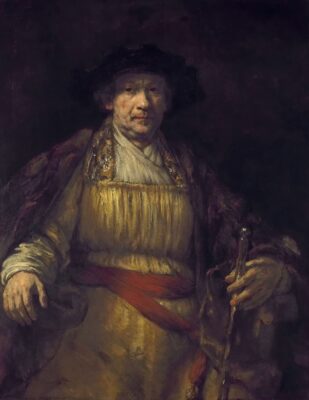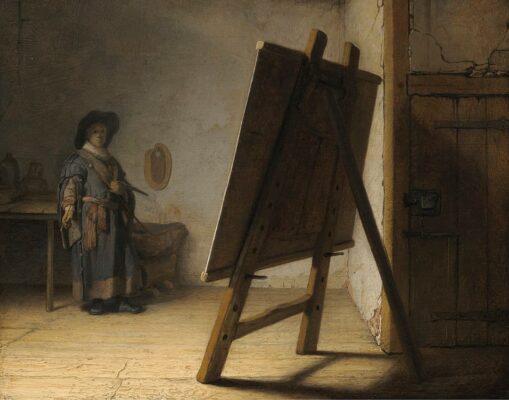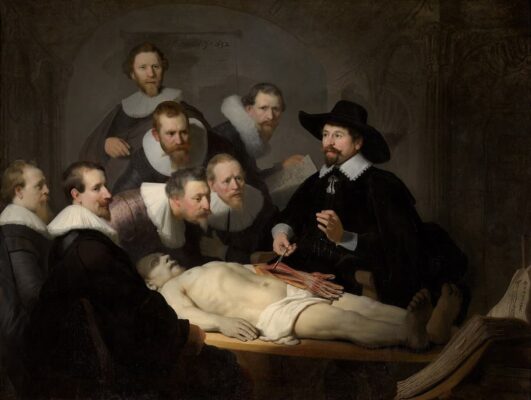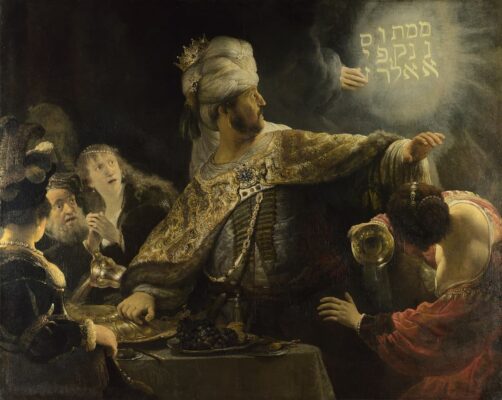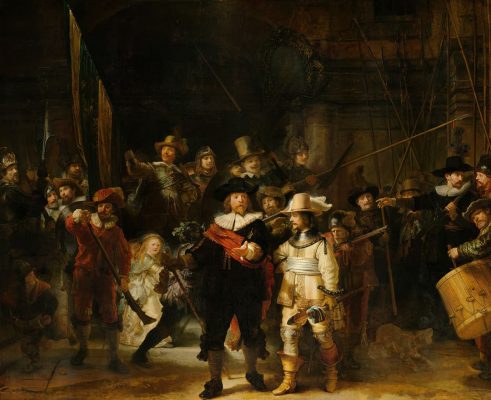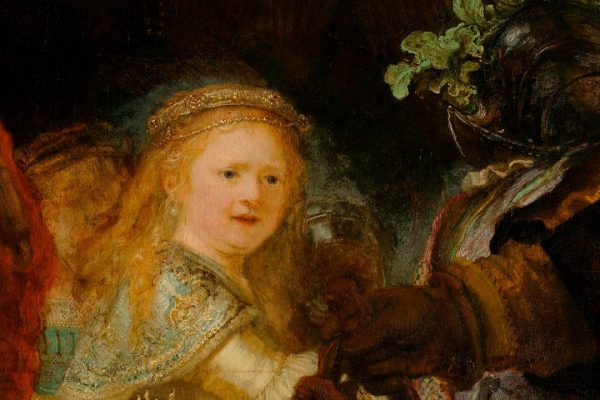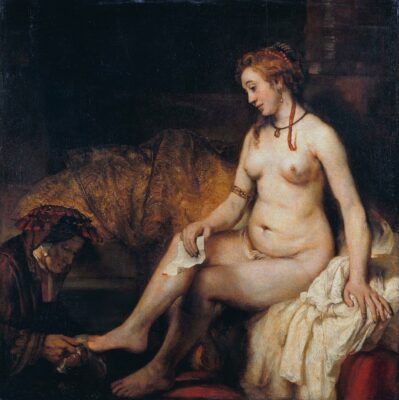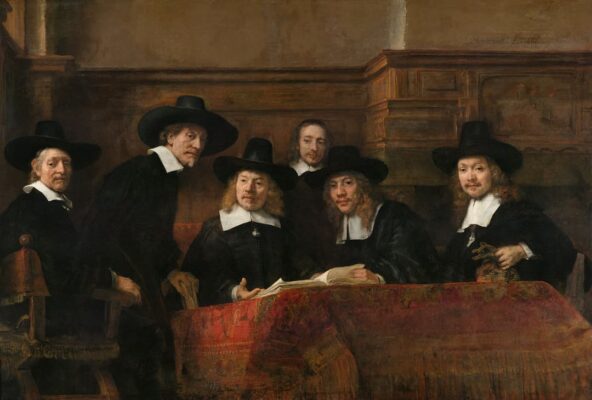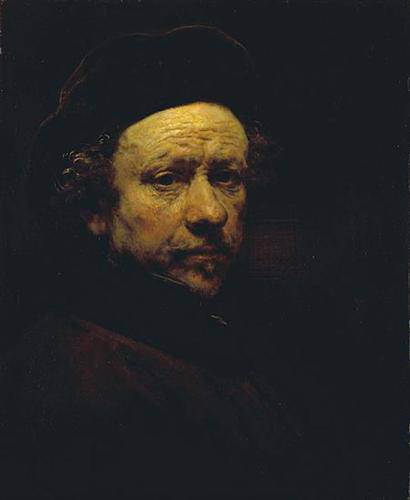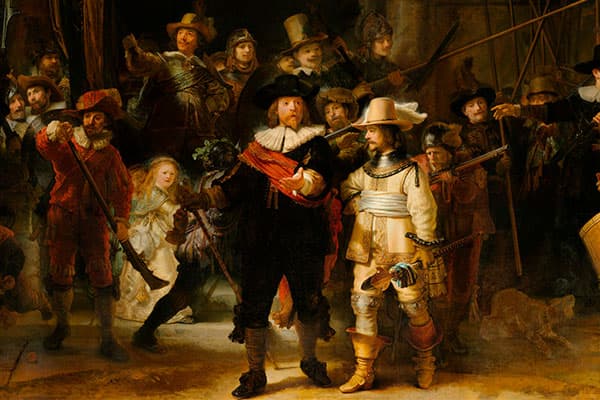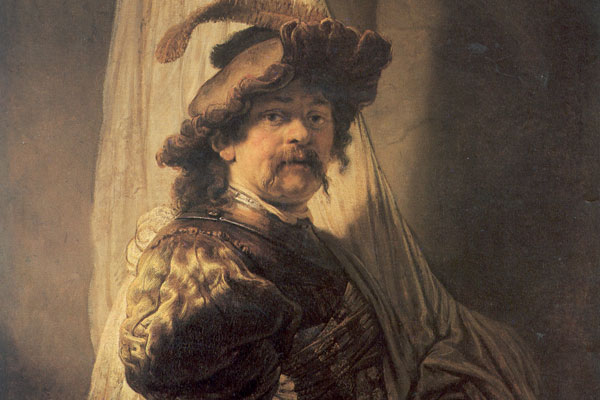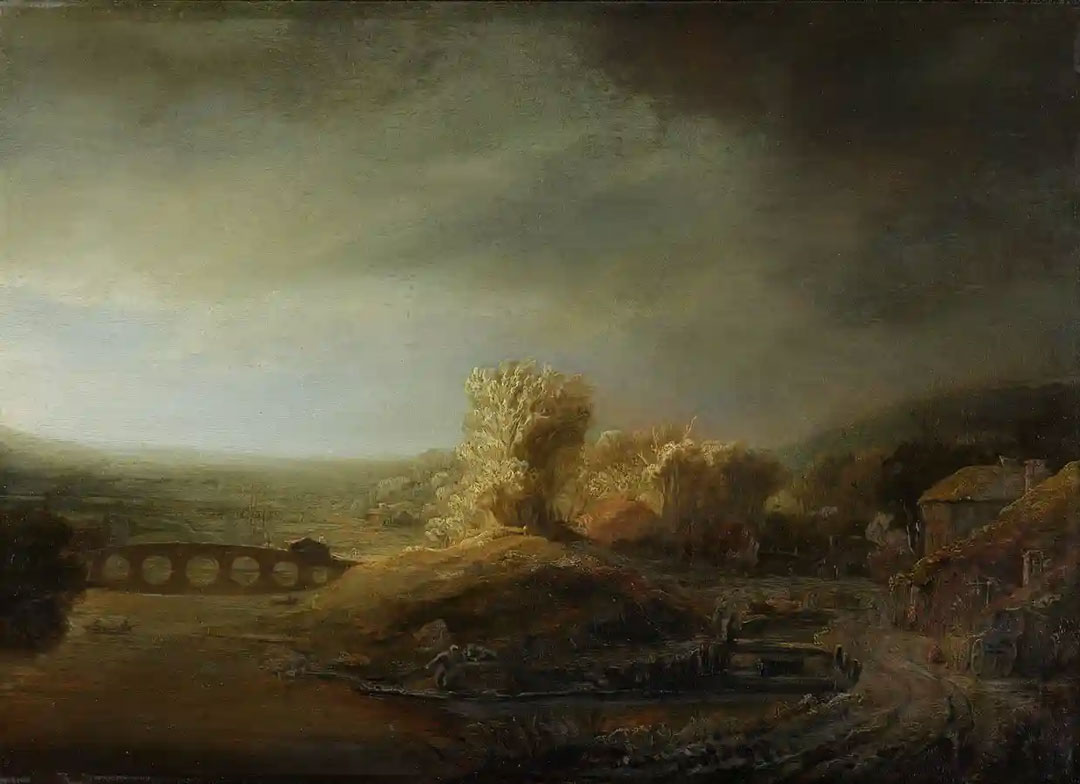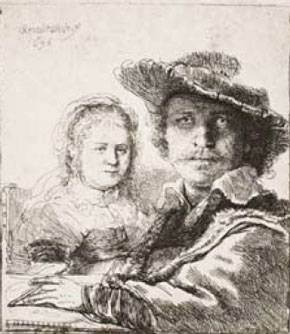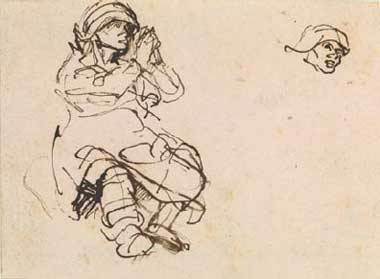Rembrandt
“Compare me with Rembrandt! What sacrilege! With Rembrandt, the colossus of Art! What are you thinking of, my friend! We should prostrate ourselves before Rembrandt and never compare anyone with him!“
Auguste Rodin
The greatest of the Dutch painters, the pinnacle of Baroque painting alongside Velázquez, Rembrandt Harmenszoon van Rijn nevertheless eschewed the sometimes exaggerated dramatism of the Baroque painting of his time to focus on a hitherto unseen realism, creating portraits of extraordinary psychological penetration. His more than fifty self-portraits form an extraordinary painted autobiography in which the artist presents himself in an honest and sincere way, without any kind of artifice or self-pity.
Imagen: Rembrandt: “Self-portrait”, 1658. Oil on canvas, 133.7 x 103.8 cm. Frick Collection, New York.
Rembrandt was born in 1606 in Leiden, where he began to learn painting in the studio of Jacob Isaacsz. van Swanenburg. He opened his own studio shortly before his twentieth birthday and achieved a certain degree of success that encouraged him to move to Amsterdam, then one of the most prosperous cities in Europe. From this early period date “Judas Returning the Thirty Silver Pieces” (1629, private collection) and “The Artist in his Studio” (1626-28, Museum of Fine Arts, Boston), often considered his first masterpiece.
In Amsterdam, Rembrandt devoted himself mainly to portraiture, although he also painted more complex scenes such as “The Anatomy Lesson of Dr Nicolaes Tulp” (1632, Mauritshuis, The Hague), one of the most famous works of the Dutch Golden Age. In the second half of the decade, he painted several highly complex religious scenes, such as “The Blinding of Samson” (1636, Städel Museum) and “Belshazzar’s Feast” (1635-38, National Gallery, London).
Rembrandt: “The Artist in his Studio”, 1626-28. Oil on canvas, 25.5 × 32 cm Museum of Fine Arts, Boston ·· Rembrandt: “The Anatomy Lesson of Dr. Nicolaes Tulp”, 1632. Oil on canvas, 169.5 × 216.5 cm. Mauritshuis, The Hague. ·· Rembrandt: “Belshazzar’s Feast”, 1635-38. Oil on canvas, 167.6 m × 209.2 cm. National Gallery, London.
In 1634 he married Saskia van Uylenburgh, whom he met through Hendrick van Uylenburgh, one of the leading art dealers of the day. This connection with van Uylenburgh, together with the artist’s great talent, enabled Rembrandt to prosper, becoming one of the most sought-after painters in Amsterdam. His commercial success was, however, overshadowed by his personal dramas. His first two children passed away within the first weeks of their lives, and his wife Saskia died giving birth to their son Titus in 1641.
After these dramatic events, Rembrandt created his undisputed masterpiece, and one of the masterworks of Western painting: “The Night Watch” (1641-42, Rijksmuseum, Amsterdam) is a complex scene in which Rembrandt depicts the exact moment when Frans Banninck Cocq – the captain of the company – has given the order to advance, but this order seems to have not arrived yet to his subordinates. This tension between motion and immobility gives the picture an irresistible magnetism. Described as “a summary of everything that [Rembrandt] had executed up to then and, at the same time, a new beginning” (Michael Bockemühl, “Rembrandt”, 1992), the painting, impressive despite having suffered an unfortunate cut on the left and upper side, was chosen in 2006 by theartwolf as one of the 50 masterpieces of painting.
Rembrandt: “The Night Watch”, 1641-42. Oil on canvas, 359 × 438 cm. Rijksmuseum, Amsterdam. Set and detail.
For the rest of the decade following “The Night Watch”, Rembrandt’s painting seems to stagnate, although there are some notable works such as “Susanna and the Elders” (1647, Gemäldegalerie, Berlin). He did, however, produce some of his finest engravings, a field in which he was one of the leading masters of his era, such as his famous “The 100 Guilders Print” (c.1647-49).
Rembrandt’s paintings from the following decade show a more agile, almost modern brushstroke, noticeable in portraits such as “Aristotle Contemplating the Bust of Homer” (1653, Metropolitan Museum, New York) or “Jan Six” (1654, Jan Six Foundation, Amsterdam), or in his “The Flayed Ox” (1655, Paris, Musée du Louvre, possibly a replica of an earlier painting). Of these mature works by Rembrandt, art historian Kenneth Clark wrote:
“The psychological truth of Rembrandt’s paintings goes beyond that of any other artist who has ever lived. (…) In the ‘Bathsheba’ he makes use of studies from nature and from antique reliefs to achieve a perfectly balanced design. We may think we admire it as pure painting, but in the end, we come back to the head. Bathsheba’s thoughts and feelings as she ponders David’s letter are rendered with a subtlety and a human sympathy which a great novelist could scarcely achieve in many pages.”
Kenneth Clark, “Civilisation”, 1969
Rembrandt: “ Bathsheba at Her Bath”, 1654. Oil on canvas, 142 × 142 cm. Paris, Musée du Louvre ·· Rembrandt: “The Syndics of the Drapers’ Guild”, 1662. Oil on canvas, 191.5 cm × 279 cm. Rijksmuseum, Amsterdam.
By the late 1650s Rembrandt’s fame and fortune were already declining. He was forced to sell a large part of his art collection, a sale that brought him less money than he had anticipated. Nevertheless, he continued to receive important commissions, in particular two large canvases: “The Syndics of the Drapers’ Guild” (1662, Rijksmuseum, Amsterdam) and “The Conspiracy of Claudius Civilis” (1661-62, National Museum of Sweden), the largest work painted by Rembrandt during his lifetime, of which only the central section survives today. Like the end of a tragic story, Rembrandt passed away a year after the death of Titus, his only living son, and was buried in an unmarked grave.
G. Fernández · theartwolf.com
Masterworks by Rembrandt
More about Rembrandt
Follow us on:

